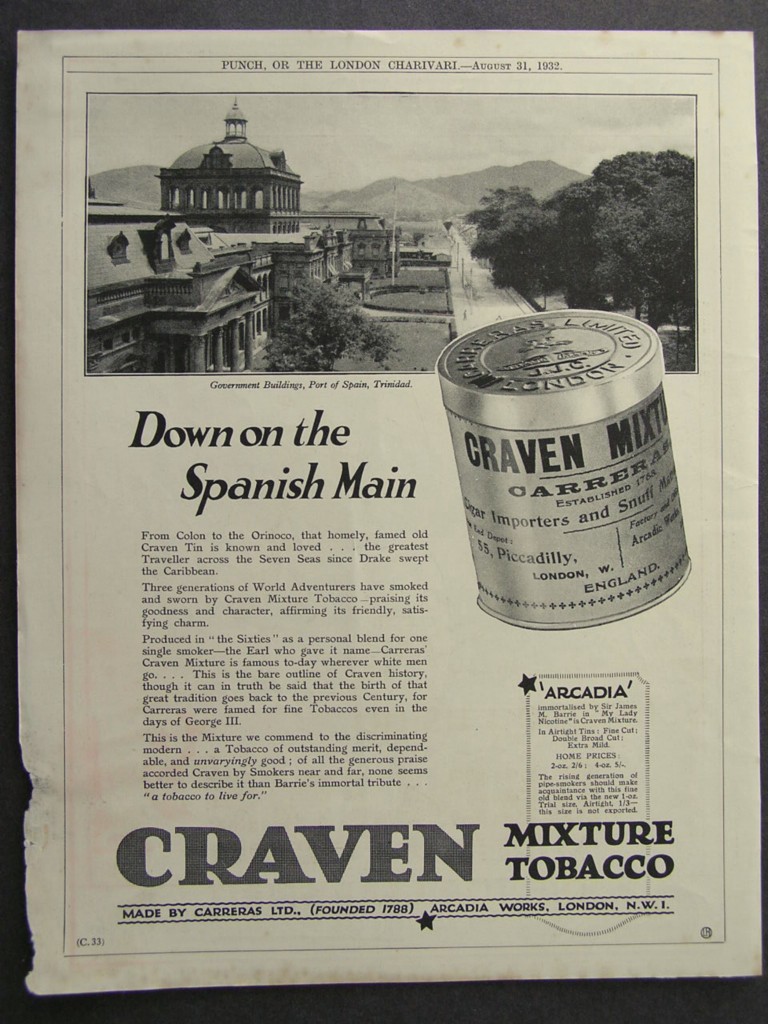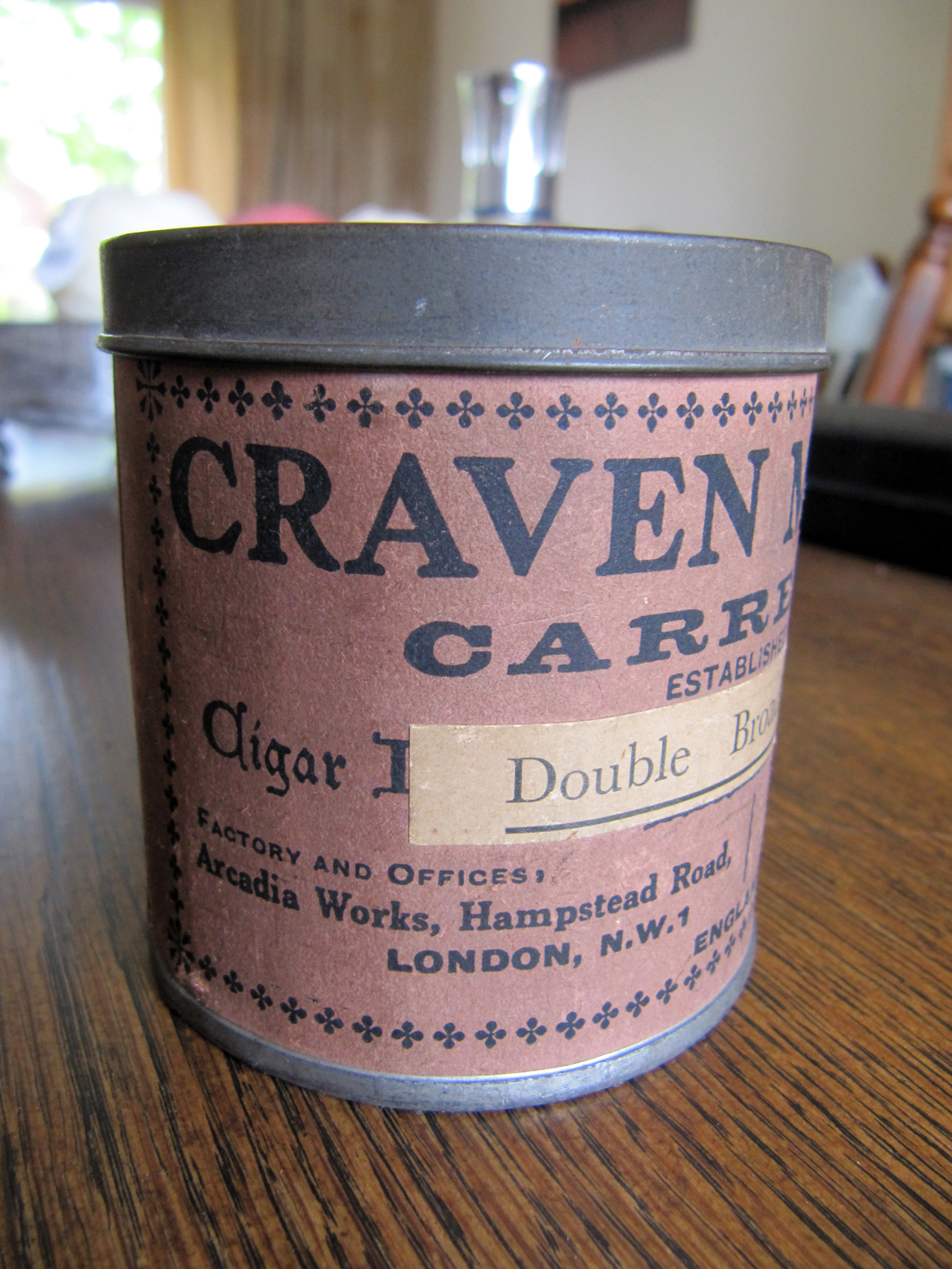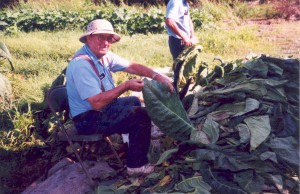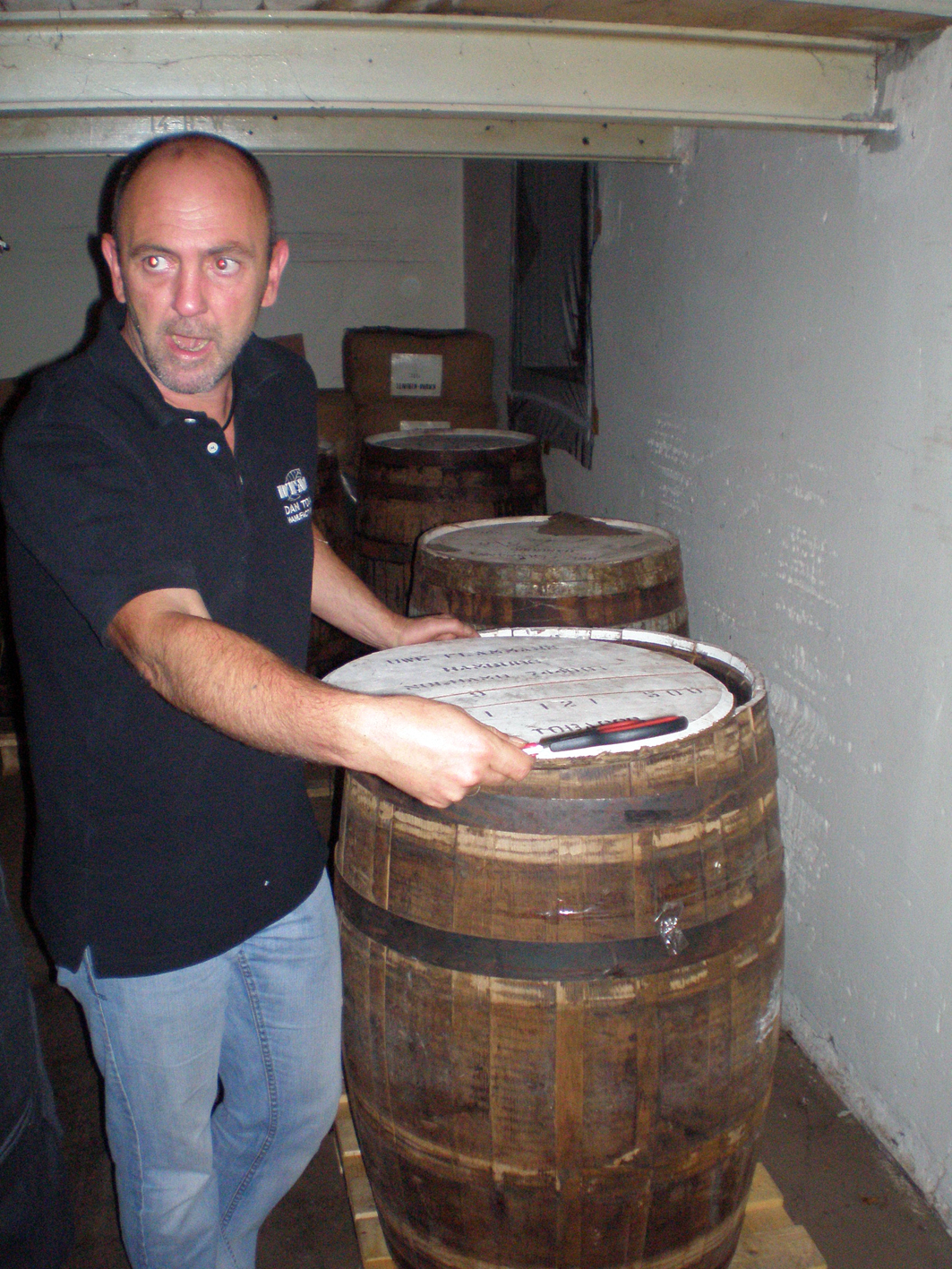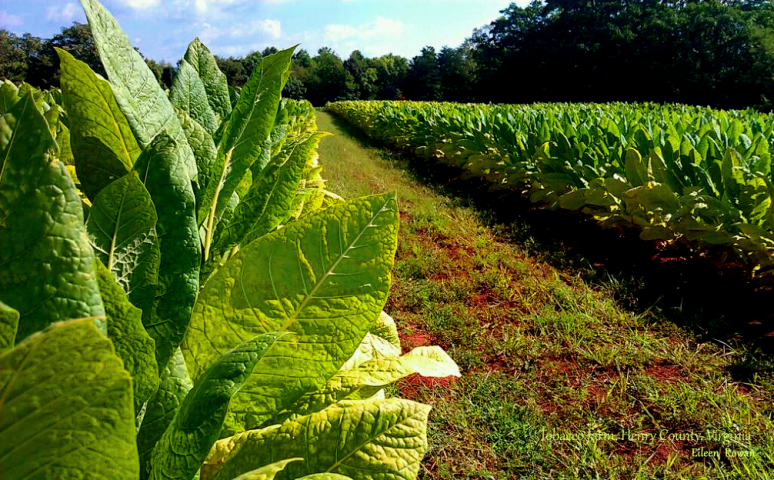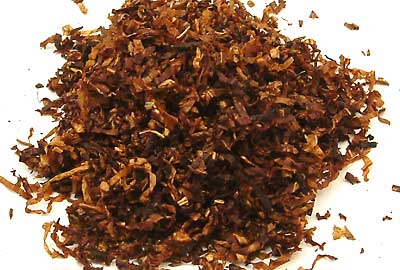The first time I read about State Express London Mixture was years ago in an article by master-blender GL Pease. It was about re-hydrating the bone-dry contents of an old tin of this classic English blend. What struck me most was not the story (although since then I often used the described re-hydration methods), but the picture on top of it. It showed the lid of a State Express London Mixture tin and I immediately fell in love with it. It had a classy, luxurious, nostalgic old world appearance which instantly appealed to me. So I went searching on e-bay and pretty soon I stumbled upon a sealed and unopened tin from the late 1980’s. To my utter joy I won the auction and soon I had the object of my desire in my possession. With trembling hands I pried off the lid and heard the beautiful hiss that indicates the air-seal was still intact. I filled up my pipe and here comes the sad part, at that point I only had been smoking pipe for about a year so I could not appreciate the blend. My taste-buds were not developed enough. I stashed away the tin until a year later when I re-hydrated the contents and tried it again. This time I was able to enjoy the mixture and acknowledge the genius of the blenders. It tasted absolutely great, a harmonious yet adventurous blend of bright golden Virginias, Syrian latakia and the costly Greek and Turkish (oriental) tobaccos Samsun, Izmir, Xanthi and Cavalla.
 I always kept searching for another tin but that proved to be rather difficult. Or it was empty, or the seal had been broken, or it was too expensive or the seller did not want to ship to The Netherlands. A couple of weeks ago on an evening I spotted a tin. It looked somewhat rusty on some spots but eejj, that is the risk you have to take. But I kept that in mind, set the bid not too high and went to sleep. The next morning I saw to my utter amazement that I had won the tin! Needless to say, I was a happy man. When I received the package (with some extra customs office costs.. Grrr…) I had to laugh. In the box was a message which read: “This tin is old and contents are not for use! Frankly, it would choke a horse!” “Well, we will see about that madam ebay-seller!” I thought. I could not wait to open the tin. I felt like Howard Carter when I pried open the lid but unfortunately no hiss this time and indeed the contents seemed mummified. Of course I immediately started re-hydrating the blend.
I always kept searching for another tin but that proved to be rather difficult. Or it was empty, or the seal had been broken, or it was too expensive or the seller did not want to ship to The Netherlands. A couple of weeks ago on an evening I spotted a tin. It looked somewhat rusty on some spots but eejj, that is the risk you have to take. But I kept that in mind, set the bid not too high and went to sleep. The next morning I saw to my utter amazement that I had won the tin! Needless to say, I was a happy man. When I received the package (with some extra customs office costs.. Grrr…) I had to laugh. In the box was a message which read: “This tin is old and contents are not for use! Frankly, it would choke a horse!” “Well, we will see about that madam ebay-seller!” I thought. I could not wait to open the tin. I felt like Howard Carter when I pried open the lid but unfortunately no hiss this time and indeed the contents seemed mummified. Of course I immediately started re-hydrating the blend.
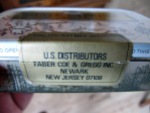 In the mean time I started digging for information about the tin. On the seal it said “US Distributors Faber, Coe, & Gregg Inc. Newark, New Jersey 07108”. I had no idea so decided to ask for information on the PipesMagazine.com forum. Luckily Jon Guss roams there and Jon is a first class researcher and author of many pipe and tobacco related books and articles. He saw my question and responded: There are two key indicators that enable me to date it to within a relatively narrow span: the measurement of the weight of the contents, and the reference to a Newark address. When first released (about 1967) SELM (State Express London Mixture but shorter) tins were denominated in ounces; sometime over the course of 1972-73 this was switched to 50 grams (listed as 1 3/4 oz in the States). As for Faber Coe’s location, their NJ headquarters address changed from Newark to Clifton in the second half of 1978. Your tin therefore dates from 1972-78. That could be narrowed a bit further by consulting RTDA annuals for 1972 and 1973, neither of which I happen to have handy. But in the scheme of things knowing your tin is forty years old plus or minus a couple of years is a pretty good outcome. So in other words, I could have a birth-year tin in my hands! Whoohoo!
In the mean time I started digging for information about the tin. On the seal it said “US Distributors Faber, Coe, & Gregg Inc. Newark, New Jersey 07108”. I had no idea so decided to ask for information on the PipesMagazine.com forum. Luckily Jon Guss roams there and Jon is a first class researcher and author of many pipe and tobacco related books and articles. He saw my question and responded: There are two key indicators that enable me to date it to within a relatively narrow span: the measurement of the weight of the contents, and the reference to a Newark address. When first released (about 1967) SELM (State Express London Mixture but shorter) tins were denominated in ounces; sometime over the course of 1972-73 this was switched to 50 grams (listed as 1 3/4 oz in the States). As for Faber Coe’s location, their NJ headquarters address changed from Newark to Clifton in the second half of 1978. Your tin therefore dates from 1972-78. That could be narrowed a bit further by consulting RTDA annuals for 1972 and 1973, neither of which I happen to have handy. But in the scheme of things knowing your tin is forty years old plus or minus a couple of years is a pretty good outcome. So in other words, I could have a birth-year tin in my hands! Whoohoo!
I was already happy with this bit of information but Jon came with even more! A history of the blend and Ardath, the manufacturer: State Express London Mixture was made by Ardath Tobacco Company, Ltd. There is info readily available online about Ardath (much of it wrong or misleading), but in a fairly small nutshell what later became Ardath Tobacco Company, Ltd. was founded by Albert Levy in 1895. He was joined by a partner, Barnett S. Gluckstein, in 1903. In a complex set of transactions apparently triggered by his desire to retire, in January of 1926 Gluckstein sold his shares “to a financial house in the City” and a holding company was created which held all the outstanding shares (Gluckstein’s and Levy’s) of Ardath.
 At the time it was coyly announced that British American Tobacco Company Ltd. (BAT) had acquired an “interest” in this new holding entity, and a collaboration in overseas markets was to begin immediately. Levy, who remained as head of the company, announced that despite BAT’s interest, the business of Ardath would be “carried on independently, exactly the same as before”. Half a year later it became clear that the new holding company (“Universal Tobacco Company”) was in reality controlled and managed by BAT, and Ardath had become in essence a subsidiary. The long sad litany of events Ardath suffered under its new master, including the eventual outsourcing of its manufacturing and closure of its factories, is wholly irrelevant to the story of SELM. Likewise the convoluted relationship between BAT, Imperial, and what remained of Ardath’s brands and the geographic rights thereto.
At the time it was coyly announced that British American Tobacco Company Ltd. (BAT) had acquired an “interest” in this new holding entity, and a collaboration in overseas markets was to begin immediately. Levy, who remained as head of the company, announced that despite BAT’s interest, the business of Ardath would be “carried on independently, exactly the same as before”. Half a year later it became clear that the new holding company (“Universal Tobacco Company”) was in reality controlled and managed by BAT, and Ardath had become in essence a subsidiary. The long sad litany of events Ardath suffered under its new master, including the eventual outsourcing of its manufacturing and closure of its factories, is wholly irrelevant to the story of SELM. Likewise the convoluted relationship between BAT, Imperial, and what remained of Ardath’s brands and the geographic rights thereto.
More to the point, by the time SELM came on the stage in the late 1960s Ardath had been a creature of BAT for generations, and what remained of the original company was apparently mostly a collection of brand names (along with a distribution function tacked on later). By then State Express, originally a cigarette brand trademarked by Ardath in 1896, was one of the largest assets left over from the Ardath acquisition, and had been exploited over time through a series of brand extensions and entries into international markets. SELM, a new pipe tobacco based on the marque, was developed in the mid-1960s. It was then trademarked in a variety of countries, including Canada (March 20, 1967), Australia (April 21, 1967), the U.S. (April 4, 1968), Germany (March 30, 1969), and Kenya (1970). It was advertised for sale in the US by the end of 1968. Internal company documents make it clear, however, that despite the various international trademark filings the blend was “created largely with the U.S. market in mind”.
As far as I can tell SELM was only ever available in 2 ounce (from launch until about 1972-73) and 50 gram (1972-73 onward) rectangular tins. The product was considered to be successful enough that two expansions were considered: a) introduction into the UK (per documents dating to late 1974), and b) development of a cigarette incorporating SELM tobacco. It’s not entirely clear to me whether either ever got off the ground. I should add SELM had a run of a bit over two decades. It was withdrawn from production sometime between 1989-1992: SELM appears in the 1988 RTDA almanac, but the US trademark was allowed to expire on November 3, 1992. It remains possible that the blend continued to be available in other countries thereafter, but given the importance of the US market to the brand that seems unlikely.
Now over to the review of the blend, I go a bit back and forth between the 1970’s and 1980’s version.
 Description from the producer – Package/tin:
Description from the producer – Package/tin:
At the bottom of the 70’s tin you can read: Bright Golden Virginia and dark latakia spiced with rare Greek and Turkish tobaccos. Further on the bottom is a sticker with the image of the blend inside. On the 80’s version this sticker is omitted. There is also (I guess on even older tins) a bottom which held an English penny to help open the tin. The frontal image on the lid is together with the old Balkan Sobranie and Marcovitch artwork the most beautiful I have ever seen. It is an old looking stylized map of Anatolia (or Asia minor) and surrounding areas with on the bottom left a sailing ship and on the bottom right a mariner’s compass. In the map are the names of the places where (most of) the ingredients originate from like (Syrian) Latakia, Samsun, Izmir, Xanthi and Cavalla. Above the card in a classy golden looking rectangle is the name of the blend. “State Express” in serif characters and “London Mixture” in a script font. On top of it all is a coat of arms, the royal warrant, granted to Ardath by King George VI in 1946 and again later by Queen Elizabeth II.
 Once you remove the lid of the 70’s version you are greeted by a golden wrapper, the 80’s one has sober wrapping which repeatedly states “Supreme British Tobacco”. On top of the golden wrapper is a small but wonderful booklet. It contains information about the State Express brand, the London Mixture blend and has a beautiful (educational) illustration of the tobacco leaves used in the mixture. On the backside of the front lid of the 70’s version the royal warrant is repeated together with the name of the blend and the description of it. The 80’s version is empty, I guess they had to cut back costs.. A pity, because as Jon Guss his father would say: packaging is marketing. A wise man.
Once you remove the lid of the 70’s version you are greeted by a golden wrapper, the 80’s one has sober wrapping which repeatedly states “Supreme British Tobacco”. On top of the golden wrapper is a small but wonderful booklet. It contains information about the State Express brand, the London Mixture blend and has a beautiful (educational) illustration of the tobacco leaves used in the mixture. On the backside of the front lid of the 70’s version the royal warrant is repeated together with the name of the blend and the description of it. The 80’s version is empty, I guess they had to cut back costs.. A pity, because as Jon Guss his father would say: packaging is marketing. A wise man.
 Ingredients/Contents/Cut:
Ingredients/Contents/Cut:
In an old document I found the recipe of State Express London Mixture, it consisted of 35% bright flue cured golden Virginia, 25% orientals (Samsun, Izmir, Xanthi and Cavalla) and 40% (Syrian) latakia. In the same file the manufacturing process is also explained, an interesting read which you can see here. Upon opening the 70’s tin I was greeted by the beautiful sight of 1 whole oriental leaf placed upon the mixture. According to information given to me by Jon there once also was a version with 2 different varieties of oriental leaves laid crossways over the blend. The 80’s version tin contained no whole oriental leaf at all, once again, perhaps they had to cut back costs. The mixture itself looks identical in both tins, I guess the contents have darkened in colour by age. Dark brown/black latakia, light orange/green and dark yellow Virginia and darker orange/green and light-brown orientals. The cut for both versions is a typical ribbon cut, although the 70’s one had a few chunkier pieces.
 Smell from the tin:
Smell from the tin:
Both versions smell aged, I can’t really describe it, those who have sniffed the contents of 20+ year tins know what I mean. A kind of “musty but in a good way” smell. If I look (smell) beneath that I am a bit surprised that the latakia is so toned down. Ok, that is common with the ageing of the dark leaf and Syrian latakia is not as assertive as its Cyprian cousin but still, there is 40% of the stuff in the blend. For the rest the hay-like, raisin Virginia dominates with mildy pungent underlying notes of the exotic oriental tobaccos.
 Taste:
Taste:
Both versions were an absolute utter delight to smoke, but there were differences. They start with a kind of strong black tea taste in which the dark fruit sweetness of the Virginia and exotic orientals slowly become more and more prominent. Like with the smell the latakia also tastes toned down. Don’t get me wrong, it is ideal for the blend, it really is in perfect sync with the other ingredients. And you get used to it, after having smoked SELM for days and days I wanted something a bit different and lit up a bowl full of (the new and excellent) John Cotton’s Smyrna, which has a moderate amount of Cyprian latakia. My taste buds who are used to a good portion of the dark leaf went like: whoaahh, latakia bomb! Anyway, the difference between the two vintages becomes apparent halfway the bowl when the oriental tobaccos take main stage. The 80’s version is taste-wise like a roller-coaster. Essences of fragrant exotic herbs and spices roll around your taste-buds with every puff while still being in harmony with the other ingredients. A true delight for the adventurous pipe smoker. The contents of the 70’s tin have melted together more. No big highs and lows here, I compare it with the curry I make, there is a kind of great basic taste and if you pay attention you can discern some ingredients. All the while with both versions the Virginia together with the latakia provide a sweet and smoky backbone. In the last third of the bowl the mixture gains flavour and intensity. The Virginias sing together with the orientals while the latakia softly but surely hums underneath. The 70’s version even has a kind of cigar-like heaviness in the end.
 Miscellaneous:
Miscellaneous:
I had to laugh when I read more of the old document because the maker of State Express London Mixture had a, ehmm, more limited view of how long a tin on the shelf should last than we have nowadays. It states: “Should be smoked as soon as possible for maximum taste. Tendency after three months to noticeable loss of flavour. Loss of colour in ‘Brights’ increasingly noticeable after three months.” Perhaps the man who wrote that is related to the e-bay woman who sold me the 70’s tin. SELM is a smooth smoke, no bite whatsoever. Nicotine-wise it is moderate, I am under the impression that the 70’s version contained a bit more of vitamin N. Burn-wise both vintages were excellent, no trouble at all throughout the bowl, only some fine grey ash was left.
 Room-note:
Room-note:
Despite the toned down latakia Ellen really did not like the smell of SELM. She even became short of breath from the smoke.. “*coughs* Perhaps the e-bay woman was right that it would choke a horse!” I on the other hand quite liked it (that is why it is not a full thumbs downs room-note). When I came into the living-room the mornings after I smoked it I detected a quite pleasant smoky, herbal odour.
 Price:
Price:
Years ago I paid $100 for the 80’s tin. At the time not so much because the dollar was low and the euro strong. Good ol’ days.. So with that price in my mind I was absolutely not sure if I would win the auction for the 70’s tin. I had a lower budget so I set a not too high maximum bid. In the end I won the vintage State Express London Mixture for $30.
 Conclusion:
Conclusion:
For me State Express London Mixture belongs in the same pantheon of legendary pipe tobacco blends as for example the Sobranie mixtures, Marcovitch and the old Dunhill offerings. It has an unique old world quality inside and on the outside of the tin. Sadly blends like this one can’t be made today. Syrian latakia is no longer made and sourcing the specific oriental tobacco varieties is nearly impossible. Something which I really regret because for me the key to adventure in pipe tobacco lies with the latter. Well ok, perhaps McClelland could pull it off with their stock of Syrian latakia and Grand Orientals series. But still, there is more to pipe tobacco than just putting ingredients together. I can’t really choose between the 2 vintages. The 80’s version was a fantastic roller-coaster taste-wise. If you hit a piece of oriental leaf in the bowl *booom!*, lots of flavour! On the other hand the 70’s one had an absolutely great basic taste with more subtle flavours of herbs and spices from far away. But it is not only the ingredients, also the classy look of the tin is absolutely superb. When you see it it almost calls out to me: “See the exotic places mentioned on my luxurious lid. I promise that if you smoke me and close your eyes your mind will be transported to far away countries where you will experience all their delights.” And I must say in all honesty, it did that to me, it was that good.
I would like to thank Jon Guss for his essential contribution to this blogpost.


























